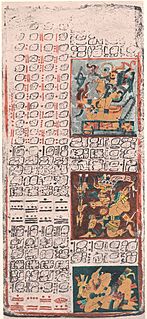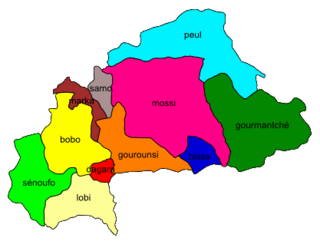Related Research Articles
Most languages of Europe belong to the Indo-European language family. Out of a total European population of 744 million as of 2018, some 94% are native speakers of an Indo-European language; within Indo-European, the three largest phyla are Romance, Germanic, and Slavic with more than 200 million speakers each, between them accounting for close to 90% of Europeans. Smaller phyla of Indo-European found in Europe include Hellenic, Baltic, Albanian, Celtic, Armenian and Indo-Aryan.
Ethnologue: Languages of the World is an annual reference publication in print and online that provides statistics and other information on the living languages of the world. It was first issued in 1951, and is now published annually by SIL International, a U.S.-based, worldwide, Christian non-profit organization. SIL's main purpose is to study, develop and document languages for religious purposes and to promote literacy.

Over a thousand indigenous languages are spoken by the Indigenous peoples of the Americas. These languages cannot all be demonstrated to be related to each other and are classified into a hundred or so language families, as well as a number of extinct languages that are unclassified due to a lack of data.
Palu'e is a Malayo-Polynesian language spoken on Palu'e Island, Indonesia.

Ifugao or Batad is a Malayo-Polynesian language spoken in the northern valleys of Ifugao, Philippines. It is a member of the Northern Luzon subfamily and is closely related to the Bontoc and Kankanaey languages. It is a dialect continuum, and its four main varieties—such as Tuwali—are sometimes considered separate languages.
Tidore is a North Halmahera language of Indonesia. The language is centered on the island of Tidore, but it is also spoken in some areas of the neighbouring Halmahera. It is unlike most languages in Indonesia which belong to the Austronesian language family. Tidore and other North Halmahera languages are perhaps related to languages of the Bird's Head Peninsula, West Papua.

Dagaare is the maternal language of the Dagaaba people in Ghana and Burkina Faso. It has been described as a dialect continuum that also includes Waale and Birifor.
Melanau is an Austronesian language spoken in the coastal area of the Rajang delta on northwest Borneo, Sarawak, Malaysia and Brunei. There are several dialects—Mukah-Oya, Balingian, Bruit, Dalat, Lawas, Igan, Sarikei, Segahan, Prehan, Segalang, and Siteng.
Parya is an isolated Central Indo-Aryan language spoken in the border region between Tajikistan and Uzbekistan. There are several thousand speakers worldwide.

Sámi languages, in English also rendered as Sami and Saami, are a group of Uralic languages spoken by the Sámi people in Northern Europe. There are, depending on the nature and terms of division, ten or more Sami languages. Several spellings have been used for the Sámi languages, including Sámi, Sami, Saami, Saame, Sámic, Samic and Saamic, as well as the exonyms Lappish and Lappic. The last two, along with the term Lapp, are now often considered pejorative.
Yaminawa (Yaminahua) is a Panoan language of western Amazonia. It is spoken by the Yaminawá and some related peoples.
Mandara, also known as Tabar, is an Austronesian language spoken on the Tabar Group of islands, New Ireland Province, Papua New Guinea. Three dialects have been identified, Simberi, Tatau and Tabar, corresponding to the three main islands in the group. Recently, a written form of Mandara has been made by a Korean missionary. So far, about 3,000 people are literate in this form of Mandara, and a Bible has been published in it as well.
Mijikenda is a Bantu dialect cluster spoken along the coast of East Africa, mostly in Kenya, where there are 1.9 million speakers but also in Tanzania, where there are 100,000 speakers. The name Mijikenda means "the nine settlements" or "the nine communities" and refers to the multiple language communities that make up the group. An older, derogatory term for the group is Nyika which refers to the "dry and bushy country" along the coast.
Orokaiva is a Papuan language spoken in the "tail" of Papua New Guinea.
Kawatsa is a nearly extinct Angan language of Papua New Guinea. According to one source, an estimated 12 people are believed to speak the language. It is spoken in Katsiong village, Tsewi ward, Kome Rural LLG.
Jofotek-Bromnya is a Papuan language of Sarmi Regency, Papua, Indonesia.
Bwanabwana, also known as Tubetube, is an Austronesian language spoken on the small islands just off the eastern tip of Papua New Guinea. It is spoken in Bwanabwana Rural LLG.

Biem, or Bam, is an Oceanic language of northeast New Guinea, spoken on Bam, Blup Blup, Kadovar, and Vial islands off the coast of Wewak.
Duau is a dialectically diverse Austronesian language spoken in the D'Entrecasteaux Islands of Papua New Guinea. It is spoken in Duau Rural LLG.
References
- ↑ Burumakok at Ethnologue (18th ed., 2015) (subscription required)
- ↑ Limits of Language, M. Parkvall, 2008. p.66, Small Languages. Accessed 25 April 2018.
- ↑ Eberhard, David M.; Simons, Gary F.; Fennig, Charles D., eds. (2019). "Indonesia languages". Ethnologue: Languages of the World (22nd ed.). Dallas: SIL International.